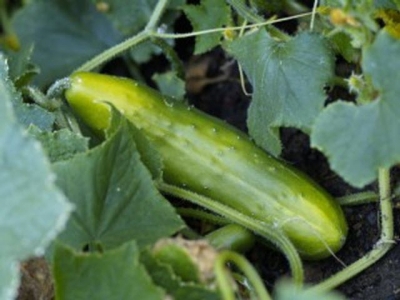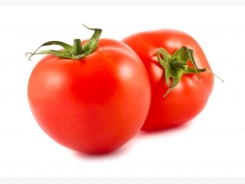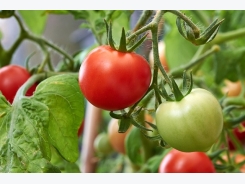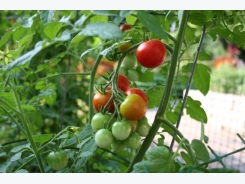Tips for Planting and Growing Cucumbers

Cucumber plants are ready for planting when 30-38cm (12-15in) high with eight to ten leaves formed, although smaller plants are often set out with great success, especially for later planting. The actual planting procedure is to set about 45-60 cm (18-24in) apart directly into soil-manure beds, with a trowel, making sure each is firmly set with no air pockets. If the root ball is a little ‘proud’ of the bed, this often helps to avoid fungal disorders at the plant’s neck. No plant which shows the least evidence of disease should be planted under any circumstances. Always water the plants well before knocking them out of their pots, unless they are in peat or paper pots when the whole pot is planted.
Where straw bales are being used, run a ridge of clean soil and peat 13-15cm (5-6in) deep on top of the bales, or better still peat plus lime at 114-170g (5-6oz) ground limestone per bushel, 4.5g /litre as this avoids the possibility of disease introduction when using unsterilized soil.
After planting the plants are initially watered in and the greenhouse kept humid for a few days. When it is seen that the roots have started to run, general watering can commence.
Greenhouse temperatures should ideally be 21°C (70°F) day and 19°C (66°F) night, ventilating at 27°C (80°F) for the first 8-9 weeks of cropping. Thereafter temperatures are reduced to 19°C (66°F) day and 17°C (62°F) night, ventilating at 24°C (75°F) to ensure good quality and colour. Few gardeners can maintain such high temperatures or will want to for economic reasons. Try to average 15-16°C (60°F). It is important to avoid cold draughts.
Training systems
Some planning is obviously necessary before planting to ensure that means of adequately supporting the plants exists. Indeed the actual placement of the beds or bales will depend almost entirely on the training system adopted. Broadly speaking there are three basic ways of training: (1) arch training, (2) oblique cordons and (3) vertical cordons. The method chosen must relate not only to the size of greenhouse but to the numbr of plants being grown. In many amateur-sized greenhouses one row of arch-trained or single cordons will invariably suffice, vertical cordon systems being more suitable where other crops such as tomatoes are being grown in the greenhouse. Where arch training is adopted it will be necessary to erect a framework of wood and wire on which the plants are arched.
Vertical and oblique systems are more likely to interest the smaller scale grower. Basically all that is involved is having a strong wire horizontally above or at an oblique angle to the plants in a similar manner to that employed when growing tomatoes. The plants are bent over to give `slack’ before securing fillis or polypropylene twine around the neck of the plants in a non-slip loop. They are then twisted around the string as for tomatoes, removing all the laterals which first appear, then allowing short laterals to form, followed by longer laterals higher up the plant. This is to avoid spoilage of fruit from trailing on the beds. Male flowers are removed to avoid pollination, allowing a reasonable quantity of female cucumbers to develop. Failure to remove the male flowers may result in fertilized and malformed fruits. The use of all-female cucumbers has helped to alleviate this chore.
Seasonal feeding and general culture
Cucumbers require regular watering, a regular supply of nutrients and good environmental control if they are to be a highly successful or economically viable crop. Constant visual assessment of the nutrient situation is necessary. For short-season crops grown in properly made up beds supplementary feeding may not be needed. Guidance on this matter can be forthcoming from having an analysis made of the soil used for the soil/manure bed. The use of nitrogen as Nitram or Nitro-Chalk (or other form of ammonium nitrate lime) at approximately 34g/ m2 (1oz per sq yd) run of bed about 6 weeks after planting is fairly standard practice for long-season crops. Alternatively 6.5g /litre (18oz) of ammonium nitrate may be dissolved in 1 gallon of water and applied at a dilution of 1 in 200. Potash can be applied by giving sulphate of potash at 34/m2 (1 oz per sq yd) at intervals of 4 weeks, commencing 8 weeks after planting. Alternatively use a complete proprietary liquid feed at 1-2 week intervals or, if self-formulating the feeds, concentrate on high nitrogen feeds early in the season, changing to higher potash feeds later. The plants themselves should give a good indication of their requirements. If thin and hard, nitrogen is required; if gross and over-vigorous, potash is required. A nicely balanced growth should be kept as such by a good balanced nutrient approach.
CO2 enrichment later in the season
This has been shown to be beneficial in specialized situations, particularly later in the season, but it should be noted that considerable natural enrichment takes place from the decomposing beds or straw bales and for all normal purposes it is doubtful whether the use of artificial enrichment would be economically justified, the exception being a late planted crop to yield into the winter.
Necking up
This practice is useful for promoting the development of surface adventitious roots, later in the season using soil or peat (peat plus 170g (5-6oz) ground limestone) per m2/yd2 in a mulch 15-23cm (6-8in) deep. Shading will not normally be necessary with a healthy crop.
Mulching (not practical with bolsters)
This involves the application of composted, well rotted farmyard manure, when the white roots are seen on the surface of the beds. It is a practice not without risk, however, as ammonia gas can cause irrevocable damage if released from too fresh manure. It is better, therefore, to store the manure out of doors for a few days before bringing it into the greenhouse to be spread on the beds and well damped down. The manure should be kept away from the main stem to avoid stem rot. The number of mulches given depends on the length of season, but usually two or three will suffice. The use of only one, or at the most two mulches of straw is a useful and often more acceptable alternative. The value of mulching, apart from providing a source of nutrient in the case of FYM, is to prevent ‘capping’ of the beds when they lose porosity and fail to absorb water freely. Note that some lime should be used along with peat.
Watering
Fairly large quantities of water will be required initially, keeping the beds moist after planting by twice or thrice weekly dampings. Then after 3 or 4 weeks a heavy watering is given once a week in combination with damping of the beds two or three times a week in hot weather. Methods of watering can involve spraylines, drip irrigation, or hosepipes, and the amounts of water to apply, in very broad terms, are about one and a half to two times the quantity of water required by tomatoes in borders and up to twice as much more than tomatoes grown on straw bales. The amount of water given to the beds is usually sufficient to maintain a humid enough atmosphere without resorting to the frequent damping down once thought to be essential with cucumbers, since disease is associated with constant high humidity. It will be noted that cucumbers can readily be fitted in with a crop of tomatoes, with largely similar temperature and humidity requirements.
Picking the crop
Carefully pick cucumbers by cutting the supporting stalk. It is usual to harvest every 4-5 days. Fruit should be kept reasonably cool after detaching from the plant. Compulsory grading standards apply for cucumbers if they are offered for sale in wholesale markets and details of the gradings can be obtained from any marketing officer or horticultural adviser. Cucumbers are usually packed in cardboard flats in 10s, 12s, 14s, 16s or more, well covered with paper.
Frame culture
Cucumbers make a useful frame crop, usually being planted following lettuce during mid to late spring, according to district, when all risk of frost is past. While it is possible to make up hot beds this is seldom practicable; soil warming cables are frequently used to give sufficient warmth to allow early planting or quicker development.
It is frequent practice merely to take out holes 30cm (12in) wide and 23cm (9in) deep, replacing the soil with equal parts of well-rotted stable manure and good garden soil. Alternatively use well-dug soil dressed with 101-135g / m2 (3-4oz) per sq yd of fertilizer. Either one or two plants 20 — 25cm (8-10in) high can be set out per frame sash, the single plant in the centre or the two plants at diagonally opposite corners.
A coat of whitewash or shading material should be put on the glass over the planting station to assist establishment, especially if weather is hot, and the tops should be pinched out when the little plants start to grow quickly. The resulting side shoots are turned out either to the four corners or to the sides, no further pruning being carried out until fruits are well formed. Unless they are all-female flowering varieties, male flowers should be carefully removed and the plants carefully watered and ventilated. Straw may be laid on the ground to keep fruit from rotting on the soil. Considerable yields can be achieved with comparatively little attention.
For later crops, seeds can be sown direct into the frame, using two seeds at each station and selecting the stronger plant. Cucumbers may also be grown under cloches, being planted out 60-90cm (2 — 3ft) apart in late spring or early summer. There are many excellent varieties ideal for frame culture.
Related news
Tools

Phối trộn thức ăn chăn nuôi

Pha dung dịch thủy canh

Định mức cho tôm ăn

Phối trộn phân bón NPK

Xác định tỷ lệ tôm sống

Chuyển đổi đơn vị phân bón

Xác định công suất sục khí

Chuyển đổi đơn vị tôm

Tính diện tích nhà kính

Tính thể tích ao




 Growing Tomatoes Under Glass
Growing Tomatoes Under Glass  Growing Tomatoes: Patio Tomatoes – Growing Outdoor Tomatoes
Growing Tomatoes: Patio Tomatoes – Growing Outdoor Tomatoes